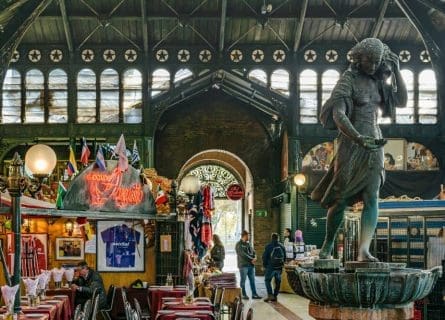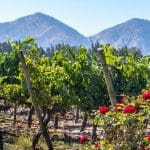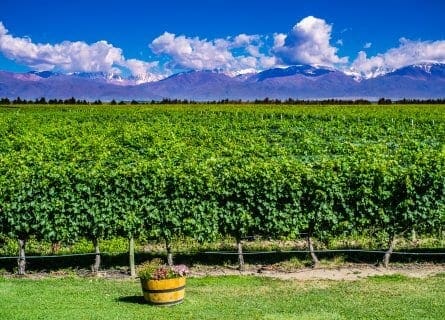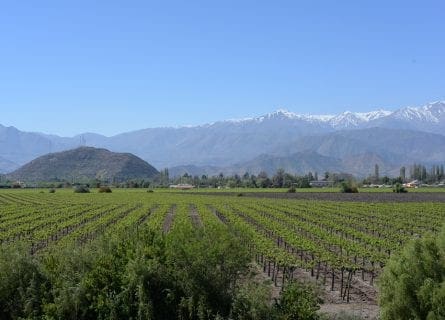Santiago de Chile Travel Guide
Santiago: A Tapestry of Triumph and Transformation
Santiago is a bustling cosmopolitan city of over five million people and has become Chile and Latin America’s economic, cultural, and political hub. Chileans proudly view Santiago as South America’s greatest capital city, a claim that most visitors feel is justified. However, like many capital cities, it has known some good and not-so-good times. During the 19th century, its inhabitants fought and died for their independence from Spain. After Colonial rule ended, they faced the enormous task of rejuvenating a very undeveloped and neglected city. This is when most of Santiago’s great architectural masterpieces were built, making modern Santiago a delight to explore.
Santiago’s Geographical and Historical Landscape
The city lies in a large valley sandwiched between the Andes Mountains to the east and the Pacific Ocean to the west. This part of Chile was inhabited for centuries by the Pichunes, an Indian tribe that endeavored to maintain peaceful relations with their powerful Inca neighbors further north. The fertile, rich plains provided an ideal base for the Pichunes to build a settlement; they farmed the land for centuries, enjoying a peaceful and prosperous existence.
Enter the Conquistadors! In the 16th century, Spanish explorers gradually conquered most of South America, including Chile. History records that one Pedro de Valdivia arrived in the area we today know as Santiago and quickly claimed the land for the Spanish Crown. He founded a small settlement, Santiago de me Nueva Extremadura, in February 1541. Named after the Spanish Saint James and his place of birth, the village benefited from ideal conditions for agriculture and a benign Mediterranean climate.
Indigenous Resistance and Spanish Settlement
The Incas were not the only problems De Valdivia had to contend with. The indigenous Indian tribes, the Pichunes, attempted to take the settlement from the Spanish only six months after he had founded Santiago. Using an organized resistance, the Indian warriors destroyed most of the settlement and fought hard for over 20 months to drive the Spanish out. They ultimately failed when reinforcements arrived from the north; the tribe accepted defeat and relocated further south of Santiago.
A period of relative peace and stability followed the uprising, although the threat of an Indian attack always loomed over the Spanish. However, it was only at the end of the 18th century that the capital got into its stride, and a proper infrastructure was constructed; during this era, Santiago’s presidential palace, La Moneda, was built. Trade with neighboring colonial countries started to flourish, and a wealthy class of landowners emerged who quickly ingratiated themselves with the city’s ruling class.
Although Santiago’s wealth grew rapidly in the early 19th century, many in the capital did not share this prosperity, and tensions grew between its inhabitants and their Spanish rulers. After many years of conflict, Chile was declared an independent republic on February 12, 1818. The transition occurred with relative ease, and during the era of the First Republic, although it was basically a one-party dictatorship, but the capital’s population increased substantially.
19th Century Developments and Urban Expansion
Throughout the 19th century, great economic and social change permeated the capital, and its population rocketed as rural poverty forced hundreds of thousands into Santiago in search of a better future. Housing was hastily erected, not always of the best quality in the city’s West. Despite these problems, Santiago enjoyed many decades of prosperity and development.
Santiago greeted the 20th century with optimism and a sense of social injustice for many of its citizens. Rapid economic growth had created a highly divided society, and not everyone had benefited from the prosperity. In the 1930s, the country undertook rapid industrialization, and hand in hand came the appearance of slums, which seemed to spring up overnight.
The Pinochet Era and Its Aftermath
The defining event for Santiago in the 20th century was undoubtedly the Military coup that deposed the democratically elected leader, Salvador Allende, in 1973. Economic depression and growing dissatisfaction with Allende’s socialist regime helped fuel a bloody revolution in the country led by General Augusto Pinochet. Pinochet’s iron-fisted rule endured for over 15 years, leaving a deep scar on the city.
Since restoring democracy to Chile in the 1990s, its scars have been healing, and its citizens have retained their optimistic and forward-thinking spirit. Despite two earthquakes, one in 1985 and another as recently as February 2010, the mood in Santiago is decidedly upbeat.
The Chilean capital is today a vast urban metropolis, one of South America’s greatest success stories. Crime rates are low; the general standard of living is one of the highest on the continent. Today, the city strives to lead by example and be at the heart of a unified continent. Vibrant nightlife, an unrivaled art and cultural scene in South America, and immense physical beauty all ensure that tourists to the region flock to this glorious city.
-

Mercado Central de Santiago Gastronomy & Wine
Chile is an incredibly diverse country encompassing a massive variety of landscapes, so as you might imagine, it offers a vast range of food and drink. The country is self-sufficient, with seafood being a real highlight due to its coastline of over 4000 km. In essence, it evolved from typical Spanish cuisine using traditional Chilean ingredients, with a mix of European influence for good measure. Their wine industry, however, is completely their own and offers a fantastic selection of reds, whites and sparkling to satisfy any palate.
Santiago has been at the forefront of the recent food revolution sweeping the nation. An influx of young, talented Chefs, both from within Chile and abroad, is changing the city’s restaurant scene for the better. New restaurants and bars have appeared overnight, transforming once-abandoned neighborhoods into thriving foodie haunts. Discerning locals head to the Vega Central district to eat hearty Chilean fare in good-value restaurants. Fancy something more upmarket? Then, discover one of the many high-class restaurants in the Bellavista district, where trendy new restaurants open daily.
The city’s regional cuisine is based mainly on seafood; restaurants serve every type of seafood: shrimp, salmon, sea bass, squid, octopus, crab, and tuna. European immigration has naturally affected the cuisine; locals enjoy the ubiquitous empanada for lunch – a cheese or meat-filled pastry folded in half, creating a pocket of cheese, meat, chicken, seafood, or vegetables. Soups and stews are also popular; the pastel de choclo contains corn, mincemeat, and chicken, like a Chilean Shepherd’s Pie. Wine lovers are spoilt, as several of Chile’s major wine regions are easily accessible from the capital.
Chile has an astonishing variety of diverse wine regions and styles; light, aromatic whites and full, intense, delicious reds are abundant. Cabernet Sauvignon grown in Rapel equals the best in the world; Chile’s signature grape variety, Carmenere, works very well with their hearty stews and meat dishes.
Highlights
-
Plaza de Armas
The essential first stop on any itinerary though Santiago is the historic center of the Plaza de Armas, reconstructed in 1999. The square houses, a music pavilion, greenery and has been witness to many of the capital’s historic events, including executions! The first national government of the country met at the Palacio de la real Audjencia located on the square in the 19th century. Today, visitors can enjoy the colonial parade every Sunday, colorful procession through the historic heart of the city.
-
Cathedral
One of the most beautiful cathedrals in South America, the Santiago Cathedral was built in the 18th century, designed by the architect Joaquim Toesca and finished by German Jesuits. It is the fifth Cathedral to be constructed on this site – Holy Ground indeed. The front facade houses an incredible mosaic of stain glass religious depictions; visitors are welcome to tour the Cathedral.
-
Mercado Central
Visitors wishing to experience the city at its most lively and vibrant should quickly head to the central market to mingle with Chileans doing their daily shop. Those looking for lively ambiance, excellent food and a glass of wine usually leave more than satisfied from this buzzing, ornate marketplace. A market was originally held in the Plaza de Armas in the 19th century, the ruler of Chile, Bernardo O’Higgins ordered that a proper structure be constructed in 1817 and since 1872 the market has been held here. It offers an unrivaled selection of fresh fruit and vegetables; every variety imaginable is for sale!
-
Valle Central
It would be a crime to spend time in Santiago and not visit one of the many wine regions surrounding the capital. The Valle central contains prestigious sub-regions such as Rapel and Maipo. Flanked by the Andes Mountains to the east, you are guaranteed a spectacular wine tasting experience.
Recommended for you
More information
If you would like us to customize an exclusive luxury tour, contact us and let us know your travel plans. We offer luxury food and wine tours for private groups of a minimum two guests. In addition, all of our private, chauffeured tours are available year-round upon request.




